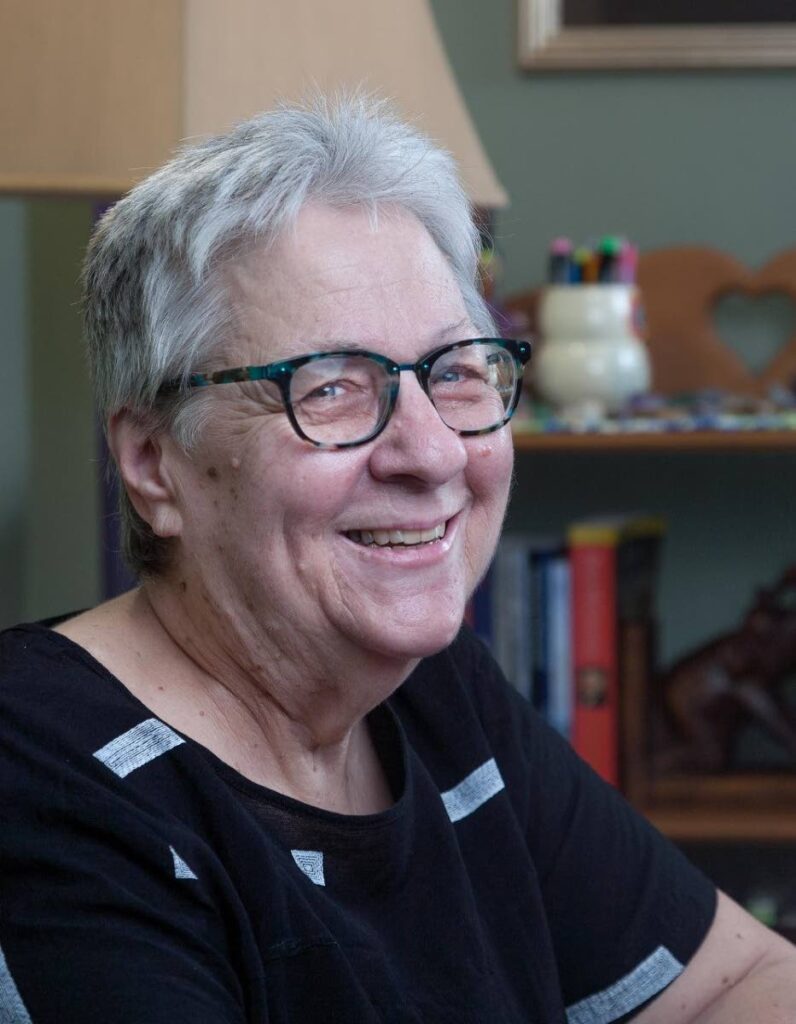The cost of writing history

Debbie Jacob
WHEN I came to Trinidad in 1984, I heard stories about La Diablesse chasing drunk men through the sugar cane. They were smile-worthy stories of creatures I couldn’t picture until I discovered Gérard Besson’s book Folklore and Legends. Besson gave folklore characters a place in our history.
His descriptions inspired and guided me in shaping folklore characters in my books Legend of the St Ann’s Flood, Nevile and the Lost Bridge and Nevile and the Duppy Master.
When Besson died on July 25 we lost an important and popular historian who made folklore and history exciting and inspiring. The Book of Trinidad by historians Bridget Brereton and Besson is one of our most invaluable historical resources.
With his trademark sense of humour, Besson always served as a willing source for journalists who needed a historian’s point of view. An interview I did with him in 2007 for a short biography I was writing on trade unionist Tubal Uriah "Buzz" Butler reminds me of Besson’s extraordinary talent for making us see and feel history.
At Paria Publishing in Cascade, Besson dictated an essay to me called Butler – The Man and the Myth. He warned me to be fair and as objective as possible. He said to examine all aspects of Butler’s life in context and told me not to excuse shortcomings.
His essay began like this:
“People can’t really imagine the conditions in which people lived before Butler came along. There is much written about people not having good homes or enough food. There is much written about life being hard during those early years when the oil industry developed.
“The basic situation on the ground was very bad. People really don’t understand the extent to which poverty was reducing people to starvation. What people don’t realise is that creating this oil industry was a huge effort.
“There was a whole jungle to cut down to make roads and clear land. People worked under horrible conditions. Snakes bit them. Trees fell on them. They died of fever. They were worked to death.
“Once British Prime Minister Winston Churchill changed the fuel from coal to oil, the task of clearing the forest, building the roads and putting in pipelines came down to the workers that Butler would represent. These were monumental tasks to take place in a tiny, obscure island and the labour came from Trinidadians, Grenadians and other immigrants from the small islands. They did it by hand.
“The vast scale of the work is difficult to imagine. All of this work was done in about 15 years beginning in the 1920s. The supervisors in charge were not easy. They contributed much to the labourers’ hardships.
“There was so much work to be done. Trinidad was a gas station in the south Atlantic for the British. Refineries were built to produce fuel for airplanes. This fuel that was used in the Battle of Britain was aviation fuel from Trinidad.”
This level of detail and description was Besson’s trademark. Now the question is what bright, young, engaging historians will step up and fill the gap left by Dr Brinsley Samaroo, Dr Gordon Rohlehr or Besson. We lost three great historical minds in a short space of time; we lost Angelo Bissessarsingh, one of our most promising young historians, in 2017.
Thankfully, we have Brereton and journalists like Kim Johnson, best known as a pan historian and Judy Raymond who wrote an important biography of dancer Beryl McBurnie and The Colour of Shadows, which uses the sketches of plantation owner Richard Bridgens to document the waning years of slavery in Trinidad.
Writing history is a time-consuming endeavour. It took me five years to research and write Making Waves: How the West Indies Shaped the US and 14 years to research and write my latest non-fiction book, which will be published in the US later this year.
Non-fiction writing can also be a costly labour of love. Many resources we need to write Caribbean history are found in foreign archives, and we often have to pay to use resources. I paid the University of the West Indies (UWI) $550 for permission to use a picture in my current book.
I point out these challenges because we need to think about providing grants and financial support for worthy non-fiction writing projects so that good writers can make historical writing financially viable. We need that because history is the foundation of culture, and right now, for most writers, non-fiction is a costly, unsustainable hobby.


Comments
"The cost of writing history"